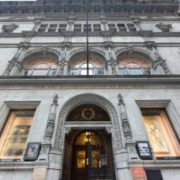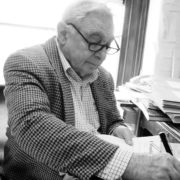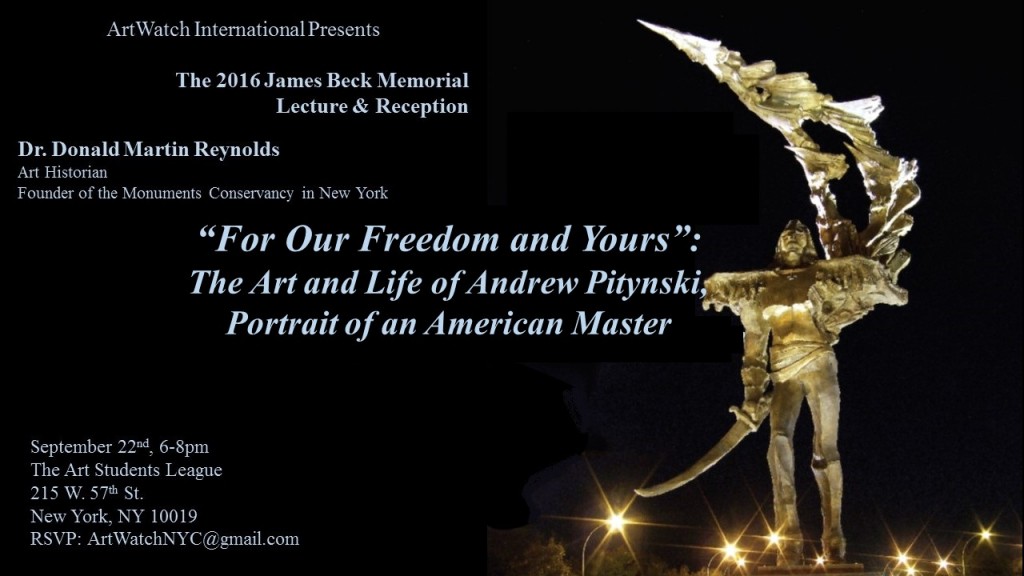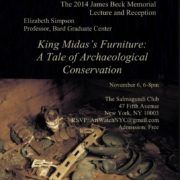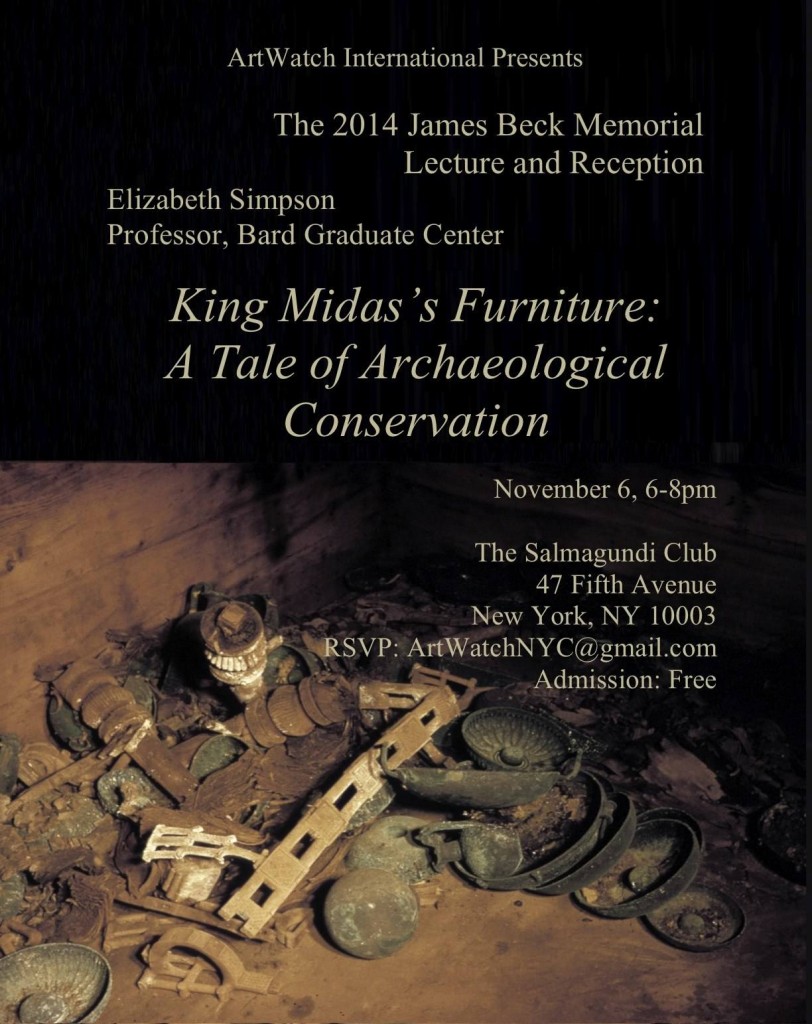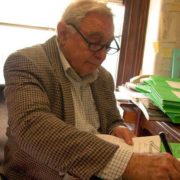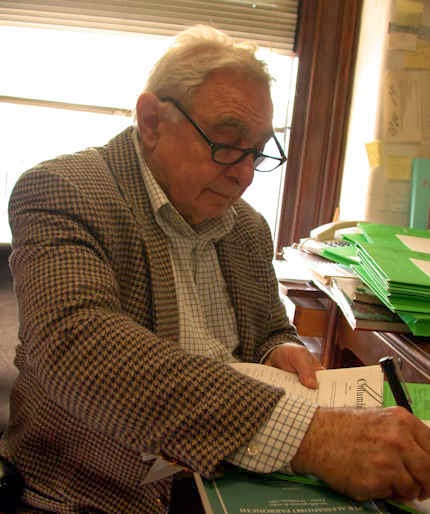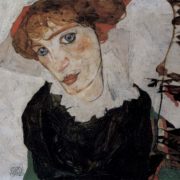Recap: 2016 James Beck Memorial Lecture
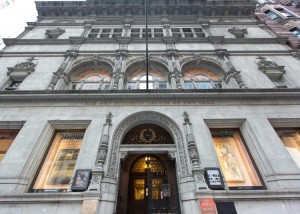
The Art Students League on W. 57th St. in Manhattan
This year’s 8th annual James beck Memorial Lecture was hosted last Thursday evening at The Art Students League of New York in midtown. Alternating between London and New York, ArtWatch holds this event each year to honor memory, scholarly efforts, and unwavering commitment to artistic stewardship of its founder, Professor James Beck. Since Beck’s passing in 2007, the lectures have been organized to continue Beck’s campaigning on the arts’ behalf, as well as to provide a platform for lectures by distinguished scholars, to commemorate his own contributions.
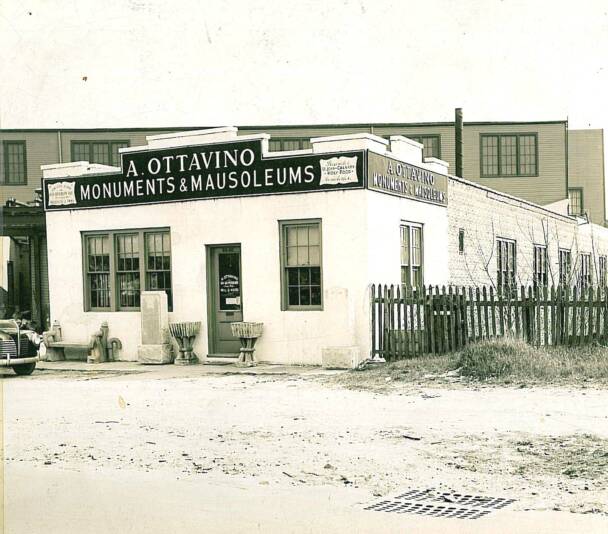
Old Ottavino Office Courtesy: A. Ottavino Corporation
Another remarkable force in the art world, and supporter of Beck’s efforts, New York painter Frank Mason, is also honored at the Beck Memorial Lectures. The Frank Mason Prize is awarded each year to an individual who has contributed to a courageous effort to benefit art scholarship and research. Frank’s dedication to traditionalist artistic training, his long teaching career at the Art Students League in New York, and protests against harmful restorations at the Metropolitan Museum leave behind a strong legacy. He was also instrumental in the founding of a precursor to ArtWatch International, The International Society for the Preservation of Art. This year’s recipient, Kate Ottavino, has expressed similar dedication in her work for A. Ottavino Corporation (founded 1913) as Director of Preservation.
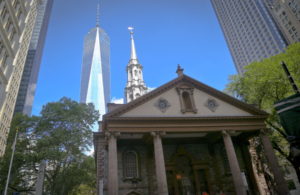
St Paul’s in NYC. Courtesy: AP Photo / Seth Wenig.
Kate has been practicing conservation for over 30 years, and since 1994 has overseen restoration work on many buildings and monuments throughout the country and has presented at several conferences, taught courses, and is extensively published. Her award-winning work on New York City landmarks can be see at Bethesda Terrace in Central Park, St. Paul’s Chapel, the Cooper Hewitt, New-York Historical Society, the Dakota Apartments, and Grace Church, among others. Kate has also made a point of pursuing educational initiatives at the Williamsburg High School of Architecture and Design and the Bronx International High School in order to benefit future generations of conservators, and advocates for landmarks as a board member of The Merchant’s House Museum and Historic Districts Council.
The art and life of Polish-born sculptor Andrew Pitynski was the topic of our 8th annual Lecture. The Art Students League of New York proved an apt setting for both the subject and the event, as the ASL has, since 1875, welcomed innovative artistic education and craftsmanship when the National Academy was unyielding to new artistic ideas.
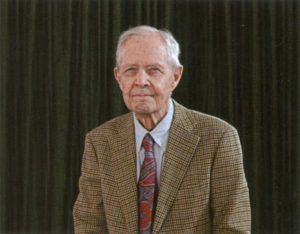
Dr. Donald Martin Reynolds. Art historian and Founder of the Monuments Conservancy (NY)
Speaker, art historian, and founder of the Monuments Conservancy, Dr. Donald Martin Reynolds, also took classes at the League. He shared from his extensive study of the life and work of Andrew Pitynski, bringing to our attention the great impact of art that embraces both personal and collective struggle. Pitynski’s works employ his own heritage and the tragedies experienced by his Polish brothers to connect with the viewer’s experience; his sculpture recognizes that there is a universal striving towards freedom that can cut across boundaries of culture and time.
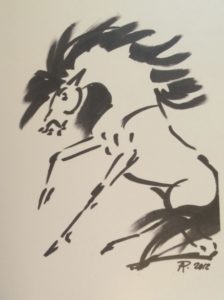
Horse, ink sketch, Artist’s Collection, 2012.
Pitynski’s talent as an artist and sculptor developed in Poland, where his avant-garde teachers encouraged him in the pursuit of truth and morality in his work. For Pitynski, that meant pulling inspiration from the constant battle for freedom that his ancestors and family members fought against the waves of war and Communism in his homeland.
The exposure during his youth to the bravery and courage of his loved ones and the local Partisan group they aligned with became entwined with Andrew’s art. From his rough-hewn bronzes of galloping warriors, to the larger than life plaster sculptures of solemn soldiers honoring the sacrifices of others, the value of human liberty is made manifest.
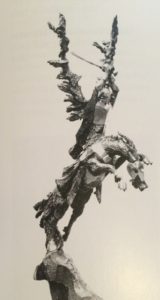
Pitynski’s Sarmata, bronze and granite, 1980.
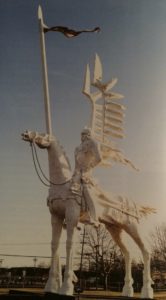
Sarmata – Spirit of Freedom at Seward Johnson’s Grounds for Sculpture, Hamilton, NJ, 2001.
Pulling from his Polish heritage, many of Andrew’s most powerful sculptures have one major common thread – the stoic warrior spirit of the ancient Sarmatians, from whose civilization, according to 15th and 16th century historians, the Poles descended. The Sarmatians themselves, according to ancient Greek historian Herodotus, were descendents of the Scythians and Amazons, and thus contemporary Polish legend embraced all the virtues of strength, independence, and bravery supposed of their distant ancestors. These characteristics can be seen, for instance, in his monumental Partisan I and Partisan II on the Boston Common and New Jersey “Grounds for Sculpture”, respectively.
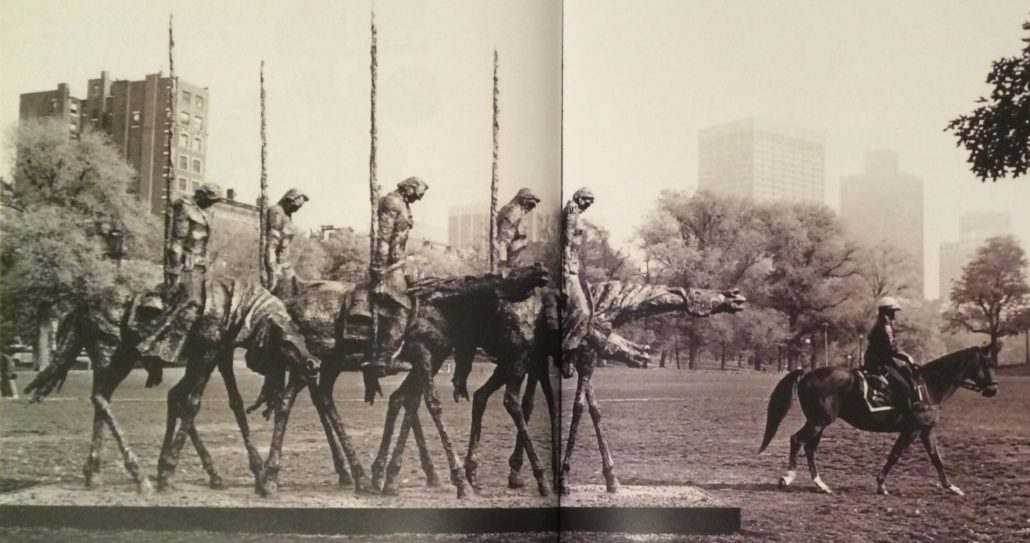
Partisan I, cast in aluminum, on the Boston Common, 1983.
Here are featured a series of marching hussars, or mounted soldiers that served as Poland’s highly regarded and magnificently feared assault cavalry in the 16th and 17th centuries. The Sarmatian spirit is evident in his larger-than-life Patriot, demonstrating the dynamic heroicism in a winged and wounded hussar, standing with sword unsheathed.
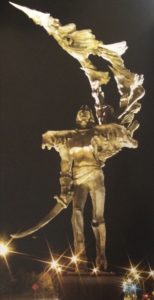
Pitynski’s Patriot in Stalowa Wola, Poland, 2011.
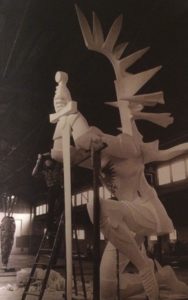
Pitynski in his studio carving plaster of Avenger for Polish cemetery in Doylestown, PA, 1986.
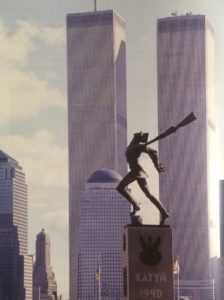
Katyn, 1940, honoring the WWII massacre of Polish nationals by Soviets, installed in Jersey City, 1990. Shown here in early 2001.
Following the tragedy that hit New York and the rest of the U.S. on September 11th, Pitynski integrated a new memorial bronze, Sorrowful Liberty, onto his 18 ft high Katyn memorial that honored the deaths of those who had been massacred by the Soviets in 1940. Throughout Pitynski’s artistic career, as Dr. Reynolds’ lecture demonstrated, he has sought the intersection of historic memory and honoring current loss. His sculptures, reliefs, and drawings exhibit an unmistakable commitment to searching for, as his master Jerzy Bandura put it, the “only valuable truth”.
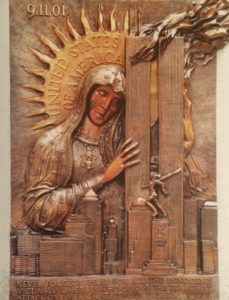
Sorrowful Liberty, bronze relief installed on the Katyn Memorial, 2005.

